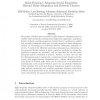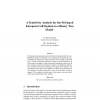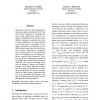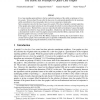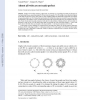203 search results - page 28 / 41 » On interval fuzzy negations |
NECO
2007
13 years 9 months ago
2007
We propose a Markov process model for spike-frequency adapting neural ensembles which synthesizes existing mean-adaptation approaches, population density methods, and inhomogeneou...
ISIPTA
2003
IEEE
14 years 3 months ago
2003
IEEE
The European call option prices have well-known formulae in the Cox-RossRubinstein model [2], depending on the volatility of the underlying asset. Nevertheless it is hard to give ...
EUSFLAT
2007
13 years 11 months ago
2007
The paper is devoted to the investigation of imprecision indices, introduced in [7]. They are used for evaluation of uncertainty (or more exactly imprecision), which is contained ...
COMBINATORICA
2008
13 years 10 months ago
2008
It is a long standing open problem to find an explicit description of the stable set polytope of clawfree graphs. Yet more than 20 years after the discovery of a polynomial algori...
MP
2006
13 years 10 months ago
2006
Graphs with circular symmetry, called webs, are relevant w.r.t. describing the stable set polytopes of two larger graph classes, quasi-line graphs [8,12] and claw-free graphs [7,8]...
